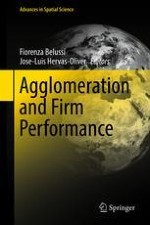2018 | OriginalPaper | Chapter
The Role of Leading Firms in Explaining Evolutionary Paths of Growth: Italian and Turkish Clusters on the Move
Authors : F. Belussi, A. Caloffi
Published in: Agglomeration and Firm Performance
Publisher: Springer International Publishing
Activate our intelligent search to find suitable subject content or patents.
Select sections of text to find matching patents with Artificial Intelligence. powered by
Select sections of text to find additional relevant content using AI-assisted search. powered by
